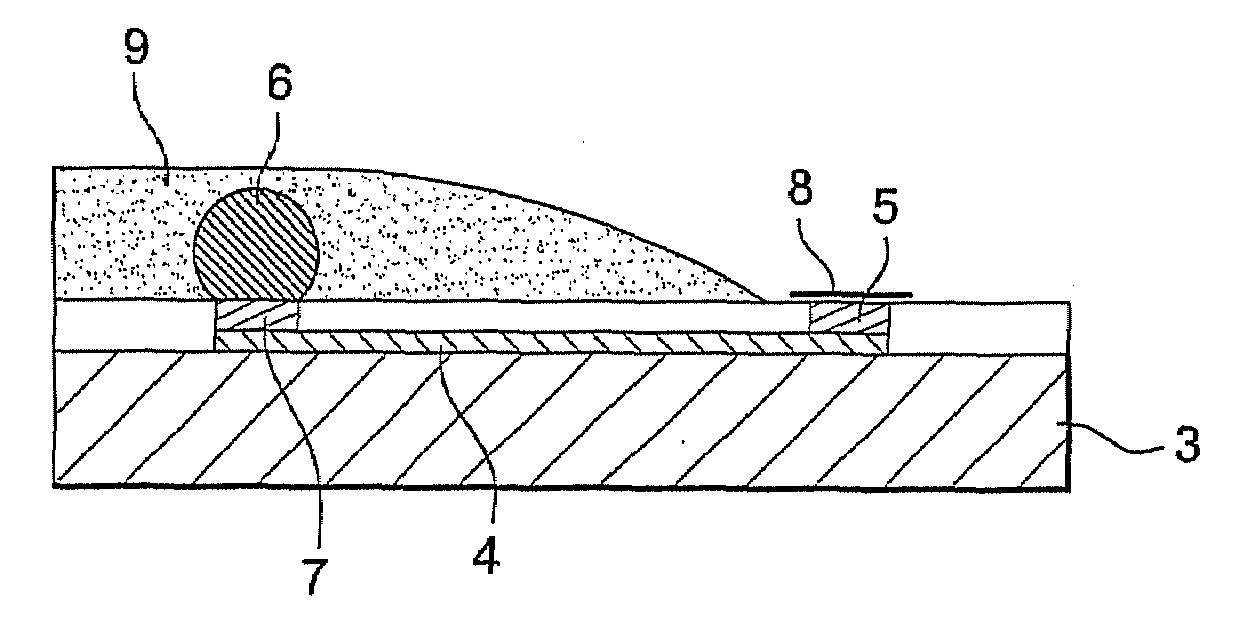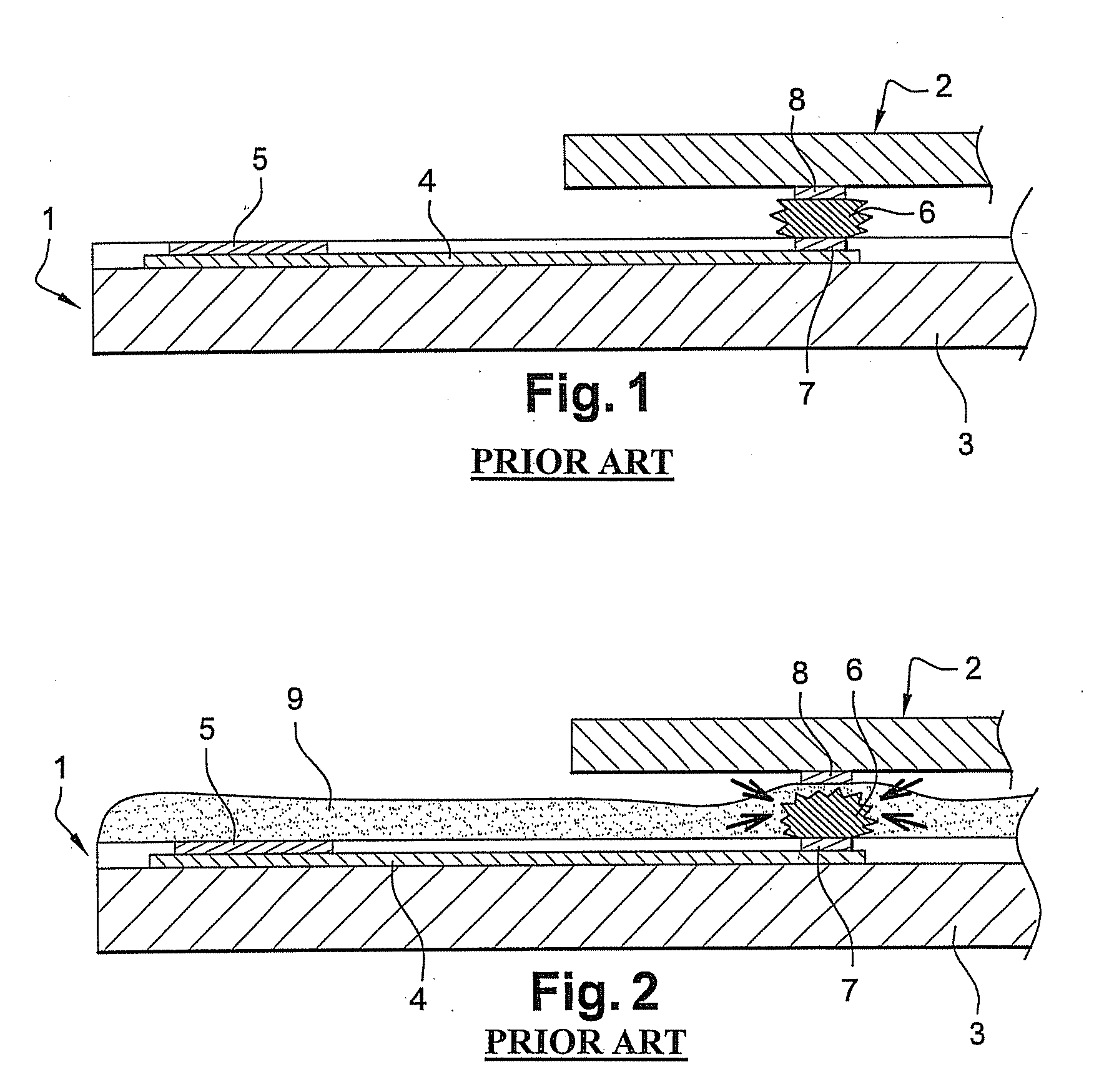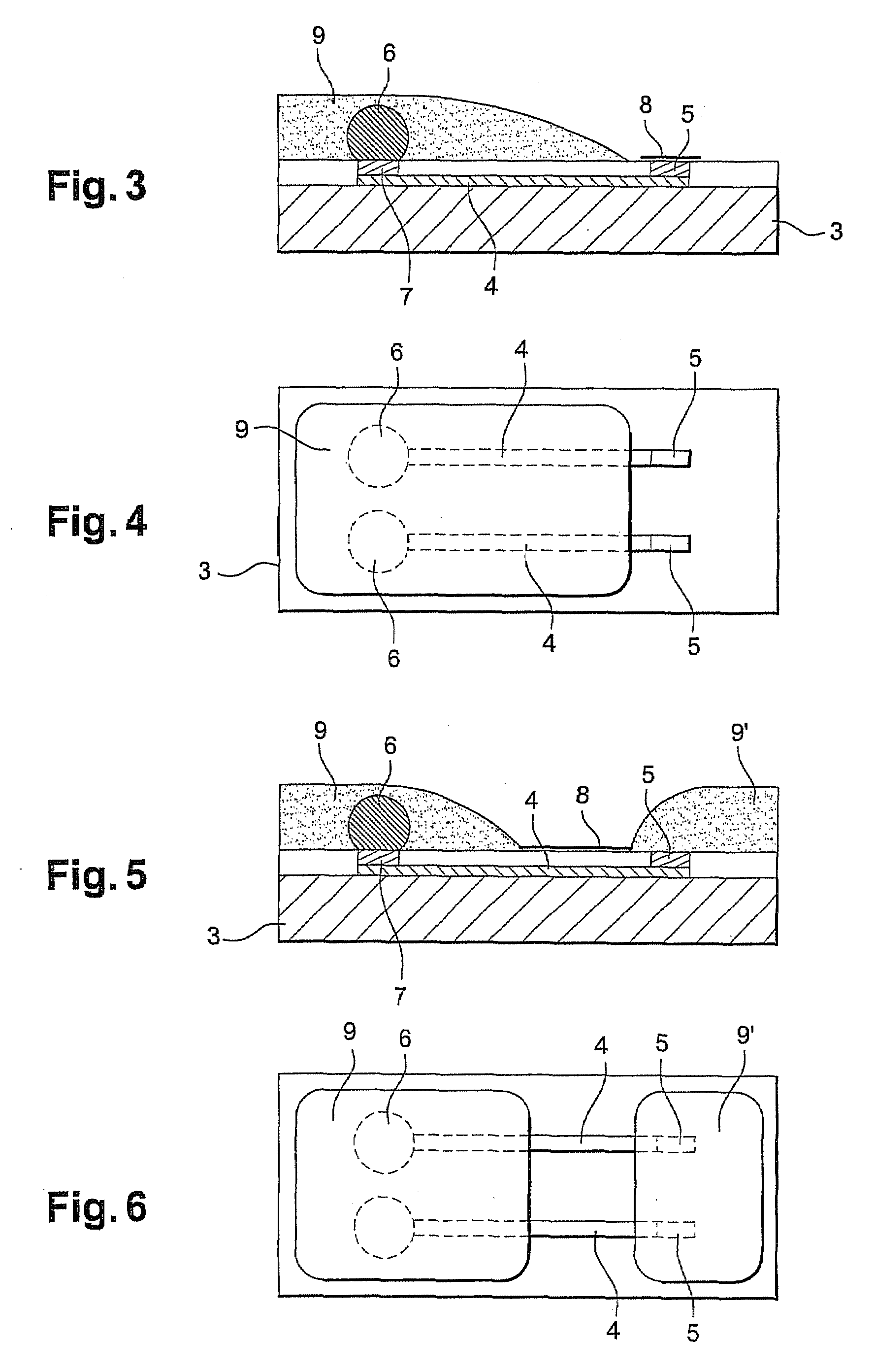Method for soldering two components together by using a solder material
a technology of soldering material and component, applied in the field of microelectronics, can solve the problems of inherently corroding flux of solder flux, impairment of sought-after hybridization between chip b, and worsening undesirable corrosion, so as to prevent the electrochemical reaction inherent in the different redox potentials
- Summary
- Abstract
- Description
- Claims
- Application Information
AI Technical Summary
Benefits of technology
Problems solved by technology
Method used
Image
Examples
Embodiment Construction
[0049]The hybridization method according to the invention is described more especially in relation to FIGS. 3 to 6.
[0050]These show the hybridization of a chip 2 on an electronic component 1. As in the description of FIGS. 1 and 2, this component fundamentally comprises a substrate 3 which is also referred to as the host substrate. This is typically made of a semiconductor material, especially monocrystalline silicon. On this substrate 3 there are a number of conductors 4 designed, in this case, to allow the transmission of electric signals from chip 2 to the external environment with a view to processing them. These conductors are, for instance, made of aluminum and lead to one or more external bonding pads 5.
[0051]Such external bonding pads require the use of a localized layer which encourages electrical conduction and, in this case, consists of a gold wire.
[0052]The hybridization bumps which ensure connection and interfacing and are also referred to as “useful bumps” are typicall...
PUM
| Property | Measurement | Unit |
|---|---|---|
| temperature | aaaaa | aaaaa |
| contact angle | aaaaa | aaaaa |
| metallic | aaaaa | aaaaa |
Abstract
Description
Claims
Application Information
 Login to View More
Login to View More - R&D
- Intellectual Property
- Life Sciences
- Materials
- Tech Scout
- Unparalleled Data Quality
- Higher Quality Content
- 60% Fewer Hallucinations
Browse by: Latest US Patents, China's latest patents, Technical Efficacy Thesaurus, Application Domain, Technology Topic, Popular Technical Reports.
© 2025 PatSnap. All rights reserved.Legal|Privacy policy|Modern Slavery Act Transparency Statement|Sitemap|About US| Contact US: help@patsnap.com



